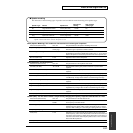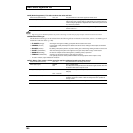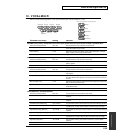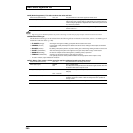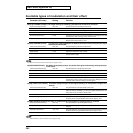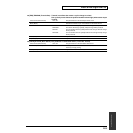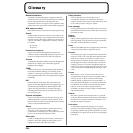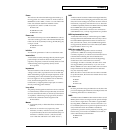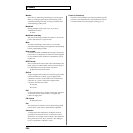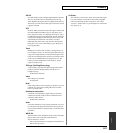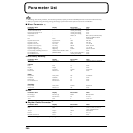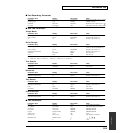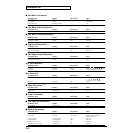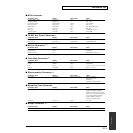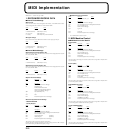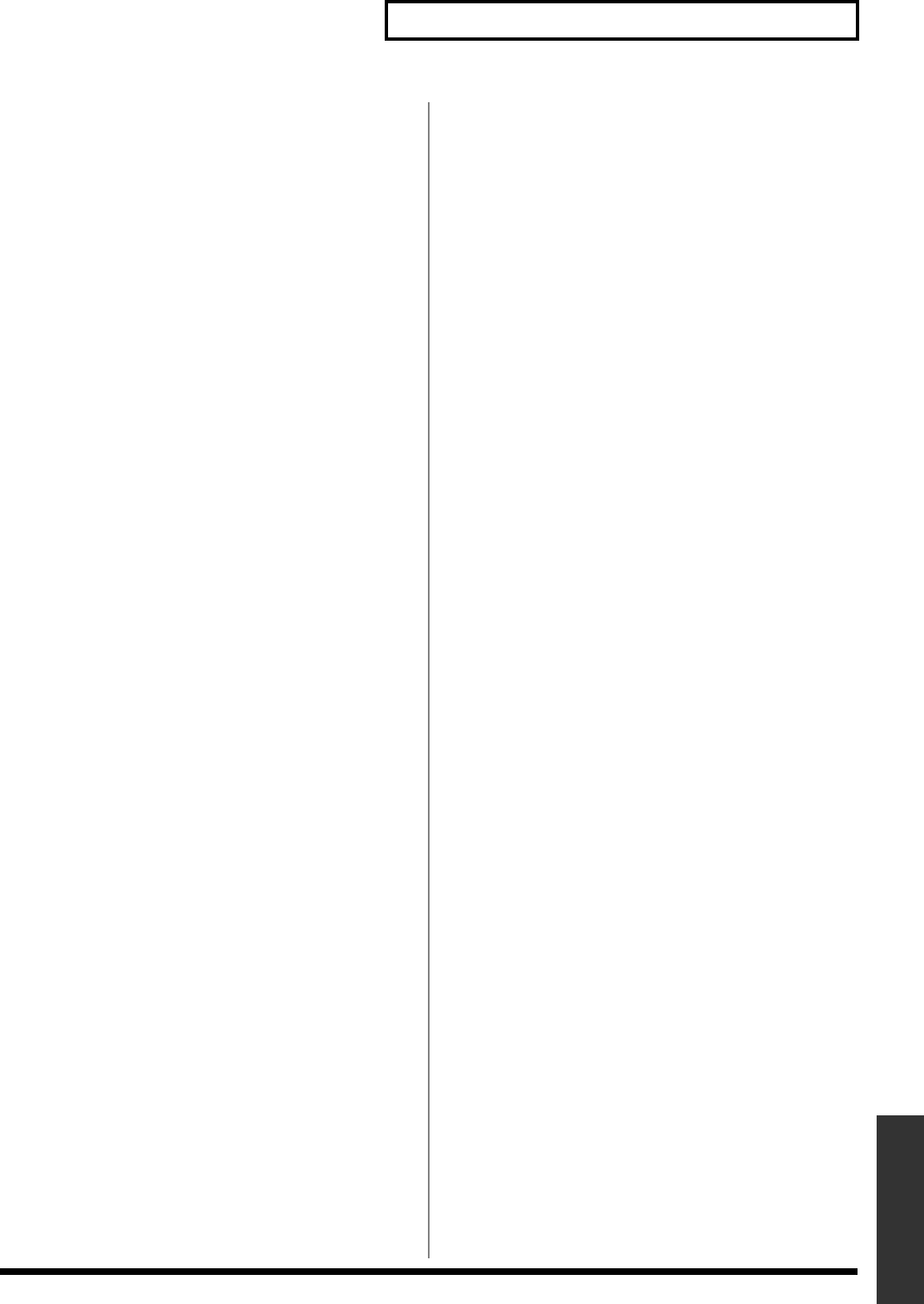
205
Glossary
Glossary
Frame
This refers to the individual still images that make up a
moving picture on a video recorder etc. In the context of
SMPTE time code or MTC, a “frame” is a unit of time. The
frame rate selection determines whether a frame
corresponds to 1/30th or 1/24th of a second.
➔ Frame rate
➔ SMPTE time code
➔ MIDI time code
Frame rate
The number of frames per second in SMPTE time code etc.
Also refers to the type of time code indicated thereby. The
frame rate can be 30, 39.97N (non-drop), 29.97D (drop), 25,
or 24 per second.
➔ SMPTE time code
➔ Frame
Initialize
To restore the parameters of a device to their basic state.
Insert effect
An effect that is used by inserting it directly into the signal
path. Examples of insertion effects include distortion,
equalizer, compressor, and wah. Normally these are used
without mixing in the original dry (direct) sound.
➔ Loop effect
Impedance
The total resistance of an electrical circuit to an alternating
voltage such as audio, expressed in units of an Ohm (Ω).
When transmitting a signal, the output impedance of the
transmitting device must match the input impedance of
the receiving device. If not, problems such as distortion,
noise, and lowered signal level can occur.
On the CDX-1, a high-impedance input jack are used for
directly connecting guitar and bass.
Loop effect
The path by which signals are sent from a mixer to internal
or external effects, and the sound produced by an external
device is returned to the mixer, is collectively referred to as
“Loop Effect.“ When using a loop type effect, the effect
sound will be combined with the original sound.
➔ Insert effect
Master
1. A parameter, knob, or fader that affects all channels in
common.
2. When two or more devices (sequencers, drum
machines, recorders, video devices etc.) are operated
in synchronization, the device that transmits tempo or
time data is called the “master.” (The devices that
receive this data and follow it are called “slaves.”)
MIDI
An abbreviation for Musical Instrument Digital Interface,
a unified standard for exchanging performance data, time
data, and various settings etc. between electronic musical
instruments, computers, and audio devices etc. The CDX-
1 is MIDI-compatible, and has two MIDI connectors; MIDI
IN and MIDI OUT (also providing MIDI THRU
functionality). When these connectors are connected to
other MIDI devices, a variety of applications are possible.
MIDI implementation chart
A table that makes it easy to confirm the types of MIDI
messages that can be transmitted and received by a device.
Check the MIDI implementation charts of both devices
that you intend to connect, and use MIDI messages that
are supported by both devices. In this manual, the MIDI
implementation chart is on p. 216.
MIDI time code, MTC
A type of MIDI message that is used to accurately
synchronize a MIDI device with professional tape
recorders, sequencers, or video devices. The master device
transmits data indicating the current absolute time
(hours/minutes/seconds/frames from the beginning),
and the slave device will advance its own time
accordingly. In order to use MTC, the other device must
also support MTC synchronization, or you can use an
MTC to SMPTE converter. Because MTC does not contain
tempo information, the displayed measures and beats
may not necessarily match.
MTC also allows various frame rates. In order to use MTC
for synchronization, the frame rates of both devices must
be set to match.
➔ Master
➔ Slave
➔ Frame rate
Mix down
In music production using a multitrack recorder, this is the
process of adjusting the mix balance of multiple tracks and
combining them into two-channel stereo.
MMC
An Abbreviation for MIDI machine Control. This is a set of
MIDI system exclusive messages used to operate multiple
devices form a single device. The CDX-1 supports MMC.
By using MMC, a MIDI device connect to the CDX-1 can
be controlled by the CDX-1 to perform operations such as
start, and fast-forward. Since MMC is intended to
synchronize operations such as playback, recording, and
fast-forward, you must also use MIDI Clock or MTC to
achieve time-based synchronization.
➔ MIDI Clock
➔ MTC



